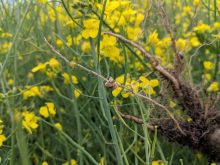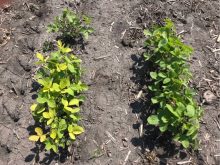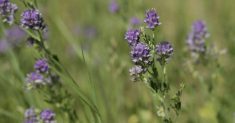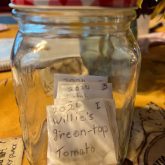Following a wet growing season that caused all kinds of disease issues across the Prairies, which reduced the quality of cereal seed in all three provinces, seed testing is coming to the forefront as seed growers and farmers want to find out what they can expect from their seed for the upcoming season.
“Although everyone has always known about seed testing, there’s more focus this year on what labs can actually do in terms of assessing seed quality,” says Sarah Foster, president and senior seed analyst at 20/20 Seed Labs which has labs in Manitoba and Alberta. “We’ve all got huge amounts of data that goes back several years to support any kind of environmental conditions that we have because every year, it’s something different.”
Read Also

Claas brings 1000 Series SP forage harvesters to Canada
In mid-August, Claas unveiled its new line of Jaguar forage harvesters at an event in Visalia, California, deep in the heart of that state’s dairy region.
Germination is number 1
The most important test that a farmer, agronomist or seed grower can do is a germination test, says Foster, followed by seed vigour and then health. “I don’t think we have done as good a job as we could of educating people about which tests are needed to assess seed quality,” says Foster. “Farmers all expect to get the best out of their seed, and a lot of times if they buy a bag of seed with a blue tag on it they take it for granted that all the work has been done. Most times it has. But they still need to understand what goes on behind that blue tag.
“I would urge farmers to have a germination test done on their seed because it’s a huge value for very little money, and they can get the vigour, and fungal screen to test for disease, and a whole package of tests for around $260.”
- Read more: Poor quality cereal seed on deck for 2017
A germination test determines the maximum germination potential of a seed sample. The seeds that germinate are normal seeds that have the root and shoot structures required to produce a viable plant. But there are other things that producers should take note of in the germination test report.
Understand classifications
“If growers understand the significance of the different classifications on their test report, they will also understand what that opportunity for that crop is,” says Holly Gelech, vice-president of sales, marketing and client services at BioVision Seed Labs.
If cereal seed tested in the fall shows a high amount of fresh seeds, those seeds are considered dormant, and there is a probability that those seeds, through the winter period, will complete their maturation process. “I would advise anyone who has a high fresh count to retest the seed in February to see if the dormancy has broken with the cold period,” says Gelech.
Abnormal cereal seeds in a sample can be a result of a number of different factors such as frost damage, heating in the bin or seed-borne diseases. “The key thing is to find out the reason behind those abnormal seedlings,” says Gelech. “When germination is borderline, the analyst will put in the analyst comments section of the report, the reason for the results. So if the analyst comment on the seed test report is primary infection observed, that’s a key indicator that there’s a seed-borne fungus in the germination test that is causing the abnormal seedlings. Once you understand what is going on, informed decisions can then be made.”
Dead seeds are dead and unable to germinate at all.
Seed labs will also put the methods and procedures they’ve used on the report — for example the temperature at which the germination test was conducted — which gives an indication of the growing conditions the seed will respond to.
Test seed any time
One popular myth is that seed must be frozen before it can be tested, but that’s simply not true says Bruce Carriere, president of Discovery Seed Labs in Saskatoon. “You can test seed right off the combine,” he says. “This year I would recommend anyone testing seed does it early. Don’t wait until April to get it in this year because if they need to buy fresh seed some varieties are going to sell out fast and are not going to be available.”
















